For a better nutrition

In minutes, check and compare the real antioxidant power of food matrices, alimentary products, food supplements, food excipients but also cosmetics
Antioxidants in food or cosmetics make the health but what to trust?
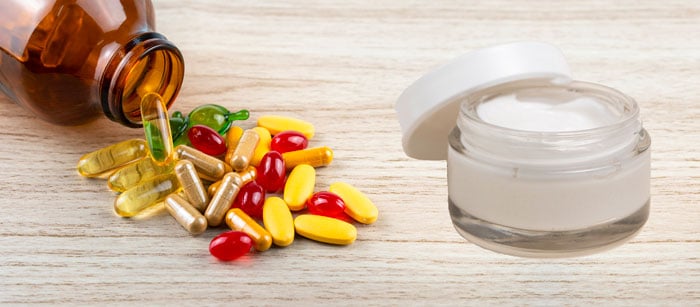
What does an anti-aging cream, a carrot soup with a beautiful orange color, long-life foods, food supplements or even drugs have in common?
All contain or are enriched with antioxidants.
This family of molecules acts against the taste and aesthetic alteration of food, is endowed with coloring powers, makes it possible to fight against oxidative stress and free radicals, factors of aging and some diseases, or contributes to the balance of our health by providing missing or deficient food supplements.
The process of oxidation in the human body produces unstable chemicals called free radicals, which damage cell membranes and other structures like cellular proteins, lipids and DNA. Oxidation can be accelerated by stress, cigarette smoking, alcohol, sunlight, pollution and other factors.
The damage caused by an overload of free radicals over time may become irreversible and lead to a variety of pathologies such as cellular aging, various cancers, Alzheimer’s and Parkinson’s diseases, and many others. It is called the Oxidation Stress (OS).
Antioxidants are found in certain foods and may prevent some of the damage caused by free radicals by neutralizing them. These include the nutrient antioxidants, vitamins A, C and E. A diet high in antioxidants may reduce the risk of many pathologies, including heart disease and certain cancers. Antioxidants trap free radicals in the body cells, and prevent or reduce the damage caused by oxidation.
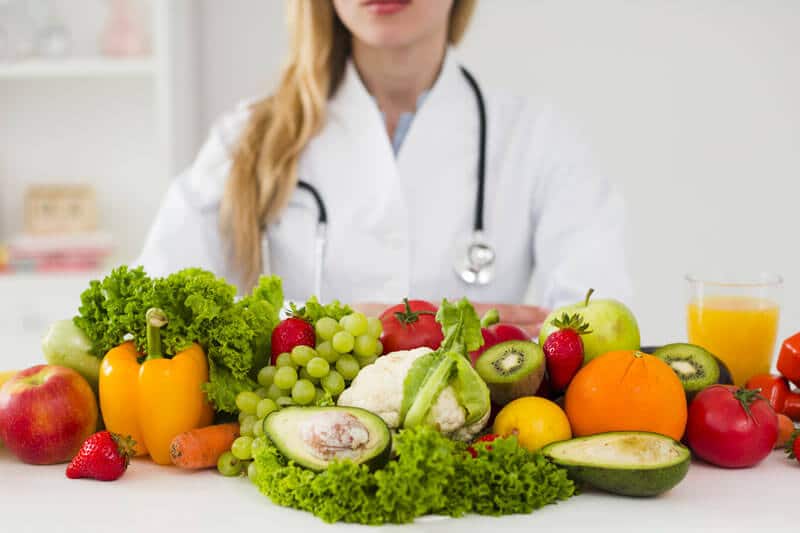
The protective effect of antioxidants continues to be studied around the world but consumers are beginning to see antioxidants as a “catch-all” for overall health and wellness.
Faced with consumer enthusiasm for these antioxidant supplements, many suppliers don’t hesitate to use antioxidants claim in their products as a prime commercial argument. However, to this date, there is no regulatory framework that requires producers and manufacturers to disclose the exact amount of antioxidant present in their products. Moreover, there is no reliable method or standard that can be used to compare the real concentration of antioxidants in different products.
The NutraScan® analyzer is a revolutionary device to directly measure and compare the total antioxidant and oxidative activity of various products such as food raw materials (fruits/vegetables, tea) and processed food products (alimentary products, food supplements, food excipients), but also cosmetics and medicinal preparations (biological fluids).
A fast and reliable method for evaluating and comparing the total antioxidant content of food and supplements
NutraScan® is a fast, reliable and low-cost method to measure the Total Antioxidant Power of food products
Measurement of antioxidant activity using in vitro assays is paramount in the evaluation of various food products and nutraceuticals for determining their antioxidant benefits.
Over the years , a large number of assays purporting to measure the total antioxidant power of food matrices have been developed. However, most of these methods have significant limitations, but also the disadvantage of being time consuming and requiring specific and complex analytical protocols and devices.
The current methods divide in two major groups: assays based on single electron transfer reaction (SET) and assays based on hydrogen atom transfer reaction (HAT).
The NutraScan® technology can be classified in the SET category but the use of microelectrodes renders the method very sensitive compared to other SET methods.
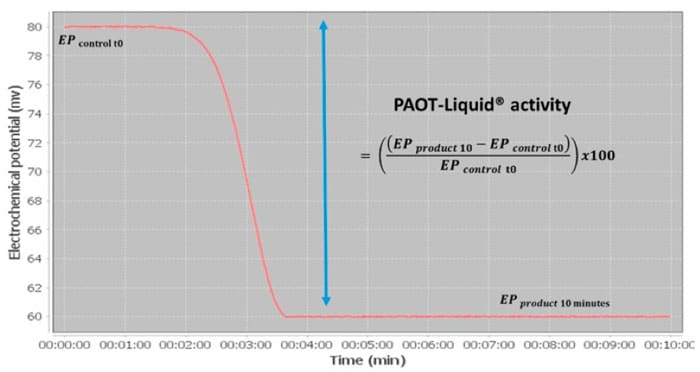
When compared to classical SET or HAT assays which require long and fastidious protocols, the determination of antioxidant capacity of food evaluated by the NutraScan technology can be achieved within minutes and without requiring analytical systems such as spectrophotometers or plaque readers, rendering the method easily accessible to non-specialists.
One of the great weakness of classical SET or HAT assays for measuring antioxidant capacity is also the absence of standardized protocols.
In the scientific literature, there are substantial differences in sample preparation, selection of end-points and expression of results, so that comparison between the values reported by different laboratories is quite difficult. Thanks to its simple and automatized protocol, the NutraScan technology overcomes these problems being operator independent.
Due to the strong correlation between antioxidant activity determined by the NutraScan® technology (PAOT Index) and the Total Antioxidant Content (TAC), combined with a calibration curve, one can therefore be able to quickly determine the real concentration of antioxidants and reliably compare it to other products in the same class.
PAOT indexes
A common scale is needed to compare products in the same range: indeed, one can’t compare an apple with a vitamin C tablet.
NutraScan® offers a variable scale by product family named PAOT Index: a 0-1000 scale for basis ingredients like pure vitamin-C and 0-100 scales for raw and manufactured products.
Presently, NutraScan® provides scales calibrated for basis ingredients like pure vitamins, raw products, nutraceuticals, transformed food products and cosmetics creams and oils.
We can work on the calibration of a specific scale for other types of products.
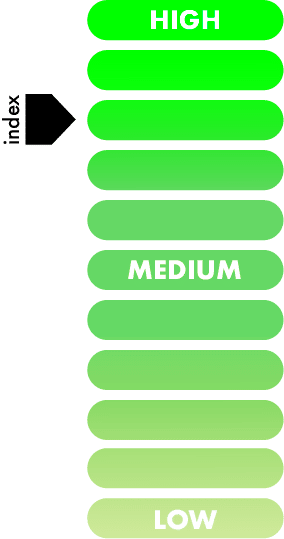
PAOT labels
In order to facilitate the comparison of products from the same family, NutraScan® can also offer a PAOT Label for demanding professionals or specialized associations.
Such a label could provide the customer with the assurance that the product actually contains sufficient antioxidants and is truly active in the body. In theory, this kind of certification can allow manufacturers to position the antioxidant quality of their product compared to other competitors.
Innovative technology for a better nutrition
The NutraScan® technology is the only method on the market able to measure quickly, both the antioxidant activity and the overall oxidant activity.
It offers the possibility to analyze various substances incorporated in water, alcohol or grease, for example, which removes the problems of solubility of some antioxidants.
This technology requires no extraction (non-destructive, non-invasive), or solubilizing, thereby avoiding any loss of antioxidant molecules. It is more accurate and more sensitive because it measures the total antioxidant molecules present in the extract, unlike other tests. Indeed, it does not take into account the nature, the specificity of antioxidants and the solvent/extract interaction.
NutraScan® will offer a highly attractive alternative to current assay methods in measuring, in a reliable manner, antioxidants concentrations in food or other products.
NutraScan® analyzer is mini portable lab and in vitro technology which directly measure the total antioxidant and oxidative activity of various products such as vegetable raw materials (fruits/vegetables, tea) and processed food products, cosmetics and medicinal preparations, biological fluids or extracts.
This is a measurement carried out in a liquid medium by dissolving the product to be analyzed in a reaction medium and then performing the direct determination of the antioxidant activity of the solution.
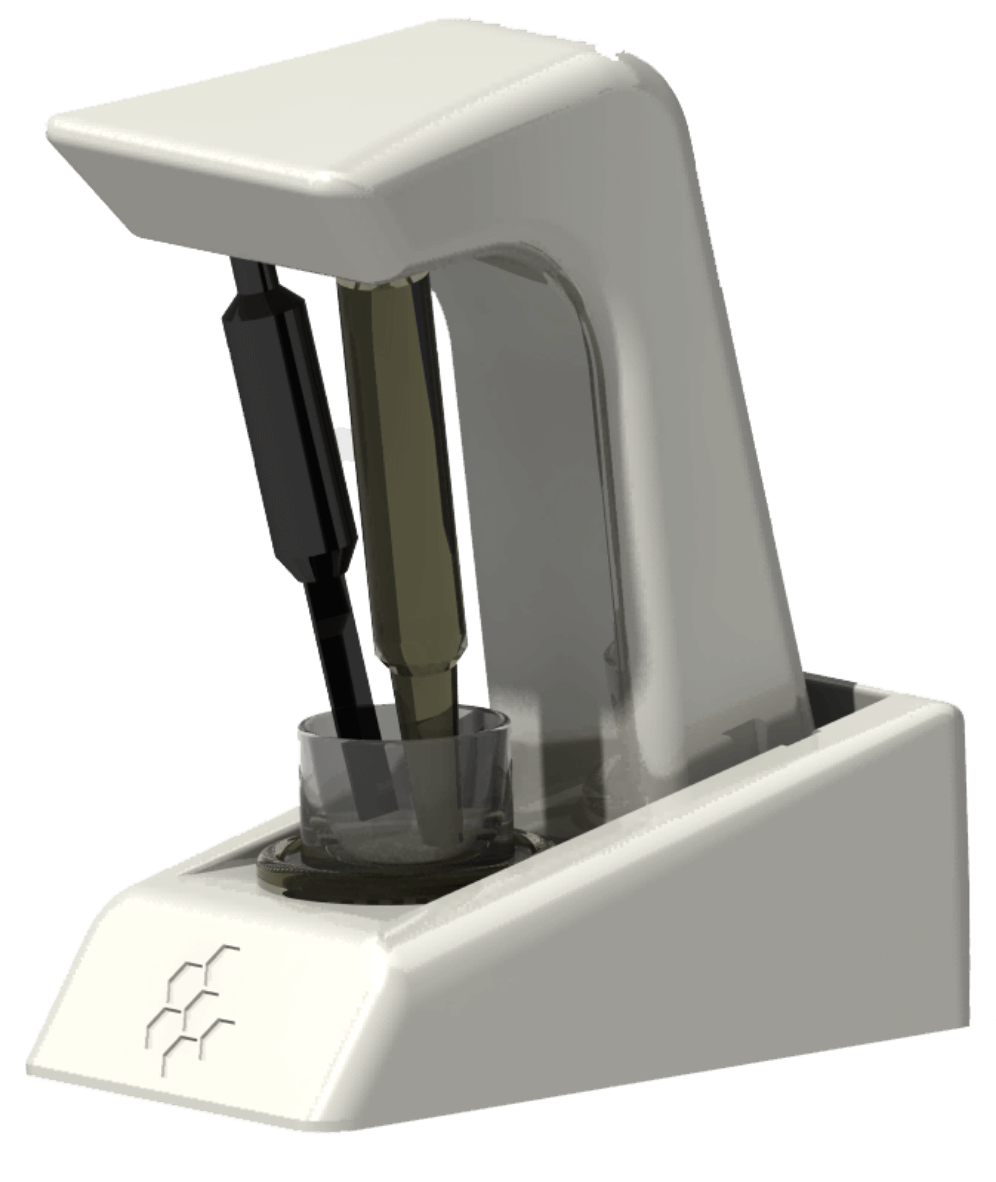
Who can use the NutraScan® analyser?
NutraScan® is of particular interest to the pharmaceutical, food, cosmetics and nutraceutical industries who wish to know the functioning of the molecules present in a product, determine the exact dosage of antioxidants in preparations, optimize future products. or to identify polyphenols, molecules with beneficial effects on health.
This fast,reliable and low-cost measurement method can also be very interesting for many other stakeholders in the food industry like vegetables an fruits producers, cooking chiefs, wine makers (polyphenols), and why not the consumer…
This method is particularly adapted to the food and nutraceutical industries which claim to produce health-beneficial foods sold in the form of tablets, powder, cream or potion.
Indeed, the NutraScan® technology can be used for liquids, oils, creams in order to:
justify, with an indisputable reference index, the claims in antioxidants concentration for the processed products
optimize the dose of antioxidants during extraction or product development (efficacy, ingredient costs)
to objectively classify the different matrices by their antioxidant power (effectiveness to fight oxidative stress)
study the effectiveness of the active ingredients and their bioavailability (given som complementary in vivo survey)
certify and communicate the antioxidant power of the product thanks to the PAOT label that can be printed to the product’s packaging
NutraScan® custom services
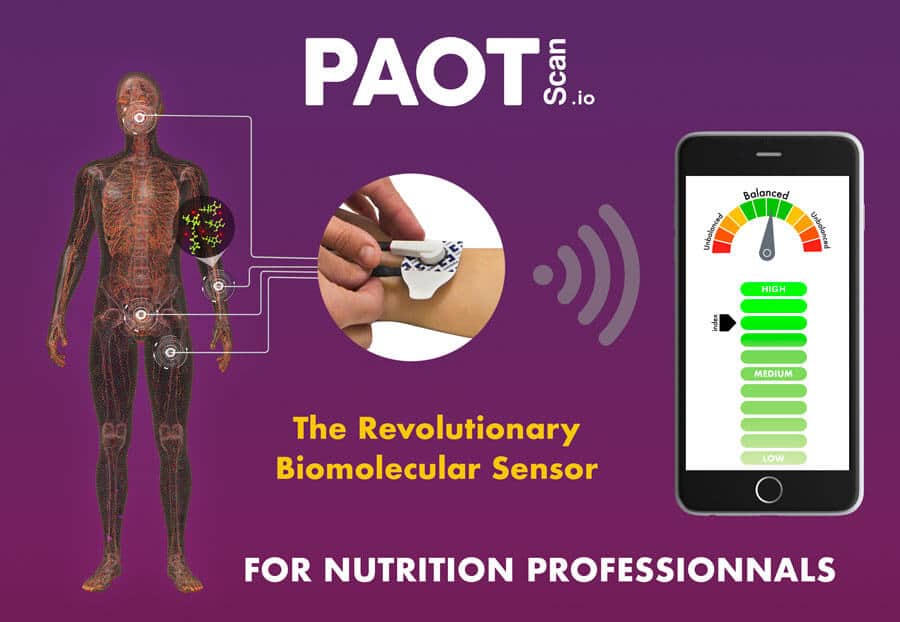
While some foods products, supplements pills and cosmetics creams may have high amounts of antioxidants, not all of them are absorbed into the body. In technical terms, antioxidants may have different levels of bioavailability in the body.
The antioxidant in vitro tests are therefore not perfect, because they do not tell how much of the antioxidants one consume are actually available for use by the body.
It could be interesting to complete the in vitro measurements with in vivo or ex vivo measures to analyze the bioavailability of products.
Bioavailability is the ability of an active vectorized molecule to be assimilated by the human body.
If you want to know and rate the bioavailability of your active principles (antioxidants) in your various matrices, we can drive specific surveys using either analytic ex vivo methods (with tools such as cellular models) or in vivo methods using our innovative PAOT Skin Technology.

